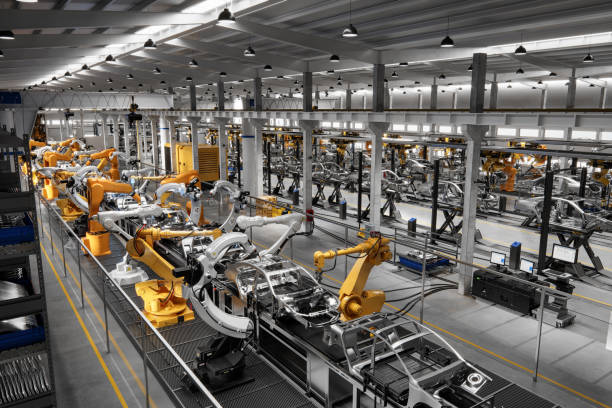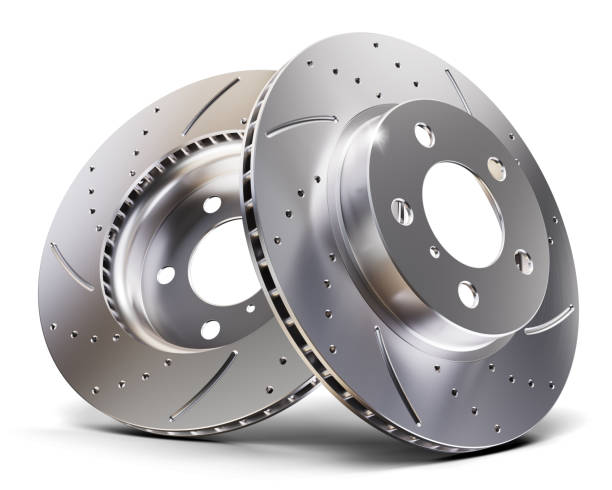High-quality custom metal parts are in high demand right now. Customers can pick up a wide range of customized parts cast in specified metals and metal alloys by using customized metal casting molds. The primary benefit of using custom molds is that they can be reused. They enable the production of many different parts at a much-reduced cost.
We can help your business produce high-quality metal components at a reasonable cost by using specialized metal casting. We can work with a wide range of metals and metal alloys and create outstanding, customized metal casting molds to meet your needs.
What Are Custom Casting Mold Types?

There are two types of molds used in custom metal casting: temporary molds and permanent molds. Most of the time, our clients choose permanent molds so they can use them again and again to produce more copies of a customized item. The ability to reuse a mold is the primary distinction between temporary and permanent molds.
- Temporary Molds: In general, temporary molds do not endure the casting process in a state that allows reuse. One common kind of temporary mold is illustrated by sand molds.
- Permanent Molds: Permanent molds are typically created by manufacturers to obtain reusable casting components. Steel, stainless steel, and graphite are three of the most often used materials for creating permanent molds today.
These molds stay longer than temporary molds, although they too eventually wear out. High-quality permanent molds are a popular investment for customers who need customized molds in order to manufacture several copies of similar items.
Other versions of permanent mold casting have been created to suit certain needs using these fundamental procedures. These are some examples of these variations:
Slush Casting
The molten metal is poured into the mold, as in permanent mold casting, and begins to harden at the cavity surface. The leftover slush (material that hasn’t fully solidified) that is still in the mold, is drained out once the amount of solidified material reaches the necessary wall thickness. Slush casting is therefore used to create hollow pieces free of cores.
Casting Low-Pressure Permanent Mold
Low-pressure air (1 bar) is used to drive the molten metal into the mold as opposed to pouring it. Applying pressure prevents the mold from emptying while cooling and minimizes shrinkage. Additionally, molds can create finer features and thinner walls.
Vacuum Permanent Mold Casting
Vacuum pressure is used to fill the mold, but the process is similar to low-pressure casting. As a result, it is possible to mold finer details and thin walls, and the mechanical qualities of the castings are enhanced.
Capabilities
| Typical Feasible Shapes: Thin-walled: Complex Solid: Cylindrical Solid: Cubic Solid: Complex Flat Thin-walled: Cylindrical Thin-walled: Cubic Part size: Weight: 2 oz – 660 lb Materials: Aluminum Copper Magnesium Metals Alloy Steel Carbon Steel Cast Iron Stainless Steel Lead Nickel Tin Titanium Zinc Surface finish – Ra: 125 – 250 μin 32 – 400 μin Tolerance: ± 0.015 in. ± 0.01 in. Max wall thickness: 0.08 – 2 in. 0.08 – 2 in. Quantity: 1000 – 100000 500 – 1000000 Lead time: Months Weeks Advantages: Can form complex shapes Good mechanical properties Many material options Low porosity Low labor cost Scrap can be recycled Disadvantages: High tooling cost Long lead time possible Applications: Gears, wheels, housings, engine components |
Making fine, custom metal casting molds

The casting of permanent metal molds usually involves at least six different steps:
- A manufacturer begins by thoroughly crafting a permanent mold out of a material chosen by the customer. The type of material used during mold construction is typically determined by the type of metal alloy used in the cast product.
- A manufacturer must properly measure and tool the parts of a permanent mold during the mold-making process to ensure they fit firmly together. The design team builds a “sprue,” or hole, that enables the flow of the hot metal through the gate, in addition to creating gates to allow the passage of molten metal. In most cases, the permanent mold also includes tubes for gas escaping.
- Permanent molds often require the assistance of gravity in order for molten metal to fill the mold. Metal alloys must be melted in a safe manner before being loaded into a mold by the producer.
- The permanent metal mold is heated and lubricated by the manufacturer to enable a smoother filling process. Additionally, the maker firmly fastens the components of the mold together (sometimes with the help of machines). The heated mold components are secured by automation because this procedure takes place in a hot environment.
- The manufacturer inserts molten metal into the gate through the sprue after assembling the mold. Automated centrifugal forces can sometimes help metal flow through the mold more thoroughly; in other situations, gravity alone can help metal flow through the mold. The manufacturer permits the metal to partially cool and solidify inside the mold after completing the filling process.
- At some point, the manufacturer will release the mold (often with the help of ejector pins).
- The last phase of cooling happens before finishing operations start.
Requirements for Making Molds
A client-specific mold and the capacity to melt and pour metal alloys into the mold are the two minimum requirements for the customized metal casting process. The client’s directions are carefully followed by the design team as they create either temporary or permanent molds.
Customized molding often requires the construction of permanent, and thus reusable, molds, but manufacturers can also use temporary molds, such as those made of sand or plastic. Typically, customized metal casting takes place at relatively high temperatures.
The types of materials needed for usage in permanent casting molds are mostly determined by the metals used in any customized metal casting project. Industrial components are frequently cast by manufacturers using stainless steel, graphite, or ceramic molds.
In order to be durable and reusable, a mold must normally be able to endure the heat produced by molten metal without deforming, breaking, bending, or dissolving. The materials needed for mold creation may also depend on the desired casting method, such as whether a producer uses gravity casting or injection molding.
The Benefits of Using Custom Cast Components
![Young happy woman feeling winner using mobile standing at white background. Young happy excited pretty woman student feeling winner holding cellphone using mobile phone winning game app prize, receiving great job offer celebrating standing isolated at white background. advantages] stock pictures, royalty-free photos & images](https://media.istockphoto.com/id/1484245575/photo/young-happy-woman-feeling-winner-using-mobile-standing-at-white-background.jpg?s=612x612&w=0&k=20&c=7UC39F97gmCjEEswkvI8gI2VzgdVQZ_jiLc7Kg7_25s=)
There are a lot of advantages to using custom metal casting molds to produce cast components, including the following:
- All components will be produced in accordance with the requirements.
- The size is more exact than with conventional forging and welding procedures
- The process involves less stress.
- A superior final product
- A faster production processes
- Reduced energy consumption
- Effective use of resources (no cropping or drops)
- Options for automated production
- If you require extra components, you can choose to have personalized metal molds made.
Why Do Consumers Choose the Metal Casting Molds Process?
The use of metal casting molds provides clients with a number of significant benefits.
- A unique permanent mold can be used to reliably recreate objects in a wide range of shapes.
- Making use of this casting method results in metal goods with stronger, more consistent inner structures.
- The production of goods with elaborate, precisely crafted surface characteristics is possible with custom metal casting.
- There are financial advantages to this manufacturing process. Permanent molds gradually lose their effectiveness, but they often last far longer than many other production tools. You may maximize your initial investment in a high-quality mold over time by relying on permanent custom molds.








